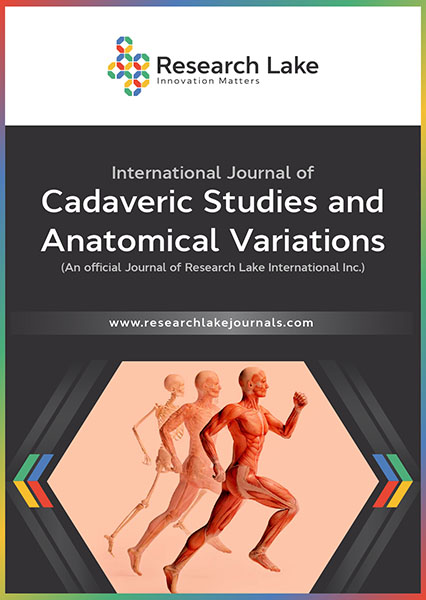Persistent Sciatic Artery: A Cadaveric Case Study
Abstract
Objective
The persistent sciatic artery associated with birth is a rare anomaly with a high rate of abnormal dilatation, blockage and stenosis prompting in extreme thrombosis, caudal embolisation, or aneurysm rupture. This is a case report on cadaveric specimen (50-year-old) African female cadaver in the Human Anatomy Laboratory, Department of Human Anatomy, Uzima University.
Methods:
During routine cadaveric dissections by first year medical students a peculiar structure was noted behind the right thigh after exposure of gluteal muscles.
Results:
The structure, identified as persistent sciatic artery, entered the gluteal region through the greater sciatic foramen and lied superficial to the sciatic nerve. The vessel was large and it passed out of the pelvis through the greater sciatic foramen below the pirifomis and descended posterior to the sciatic nerve. Muscular and articular branches branched off from artery through its course. The artery descended behind the thigh and was traversed obliquely by the long head of the biceps femoris muscle posteriorly. The sciatic artery continued as the popliteal artery that lied alongside popliteal vein, which was retraced back from the infrapiriform fossa. The femoral arteries were hypoplastic and had no obvious connections with the sciatic artery.
Conclusion: It is a vital practice to recognize the position and tendency of sciatic artery to develop aneurysms and subsequent deep vein thrombosis that may be life threatening. Furthermore, understanding of this principle changes the approach to surgical interventions that are required during the process of bypass grafting.
Copyright (c) 2022 John Juma Ochieng

This work is licensed under a Creative Commons Attribution-NonCommercial 4.0 International License.
Copyright © by the authors; licensee Research Lake International Inc., Canada. This article is an open access article distributed under the terms and conditions of the Creative Commons Attribution Non-Commercial License (CC BY-NC) (http://creativecommons.org/licenses/by-nc/4.0/).















